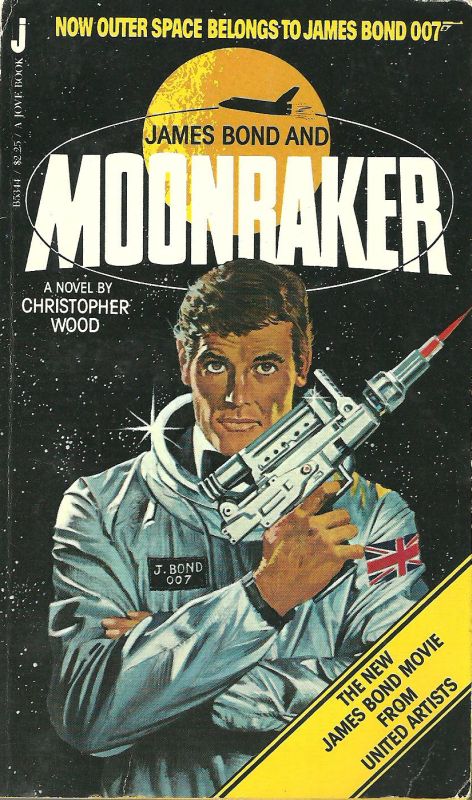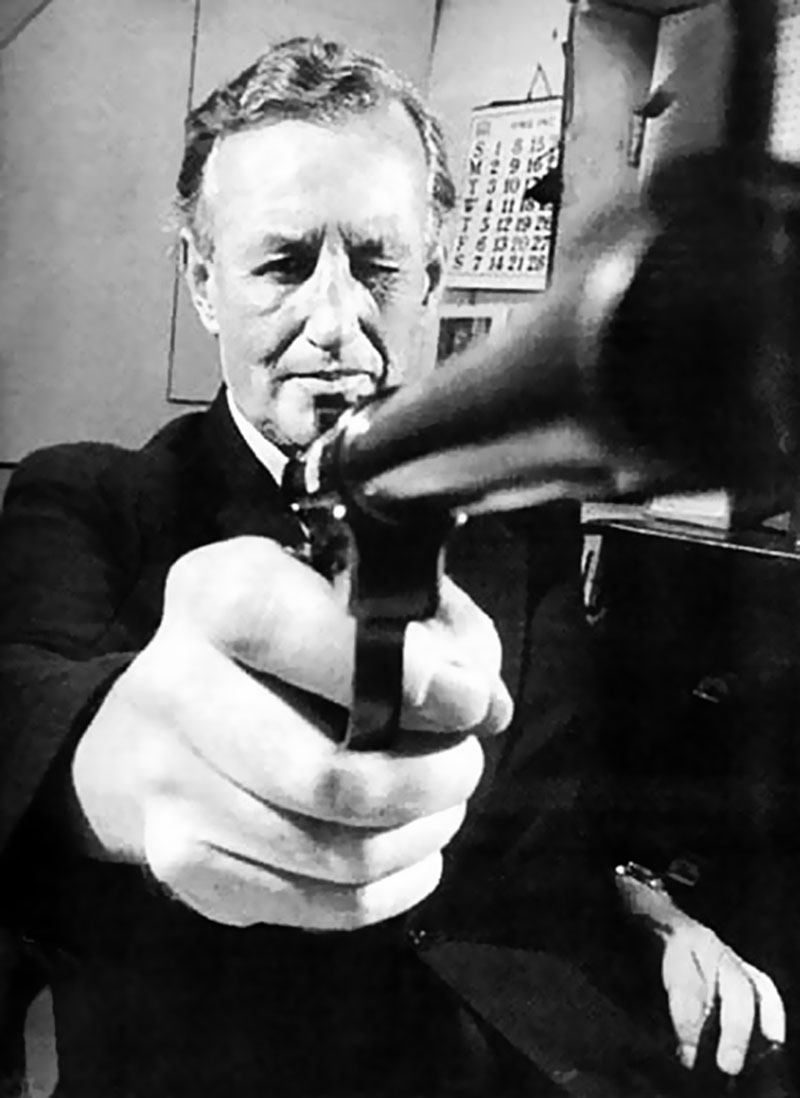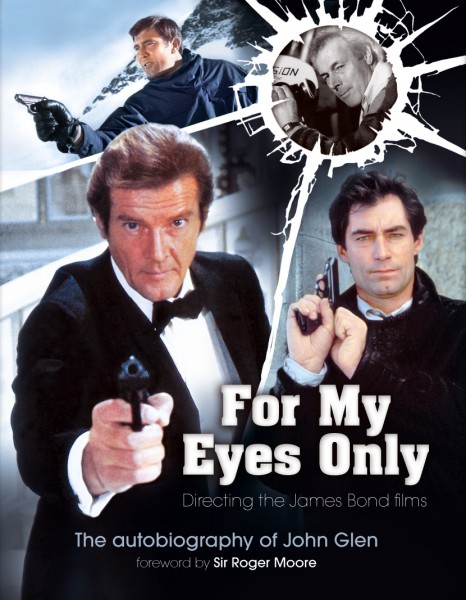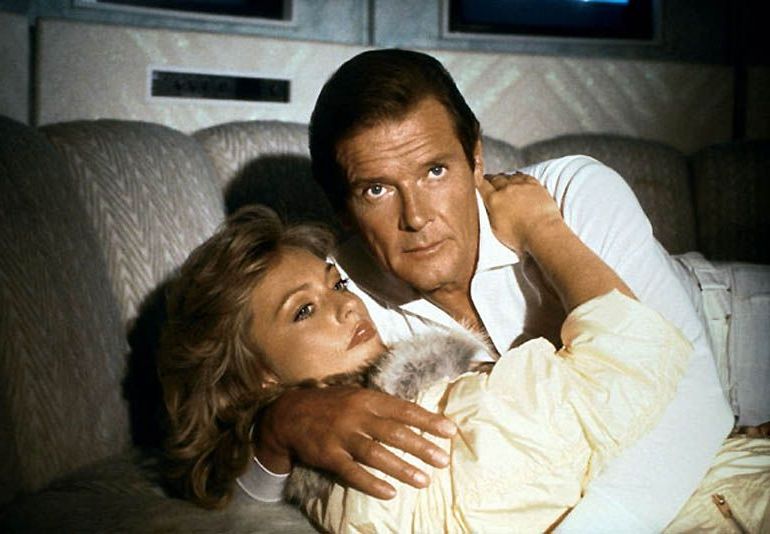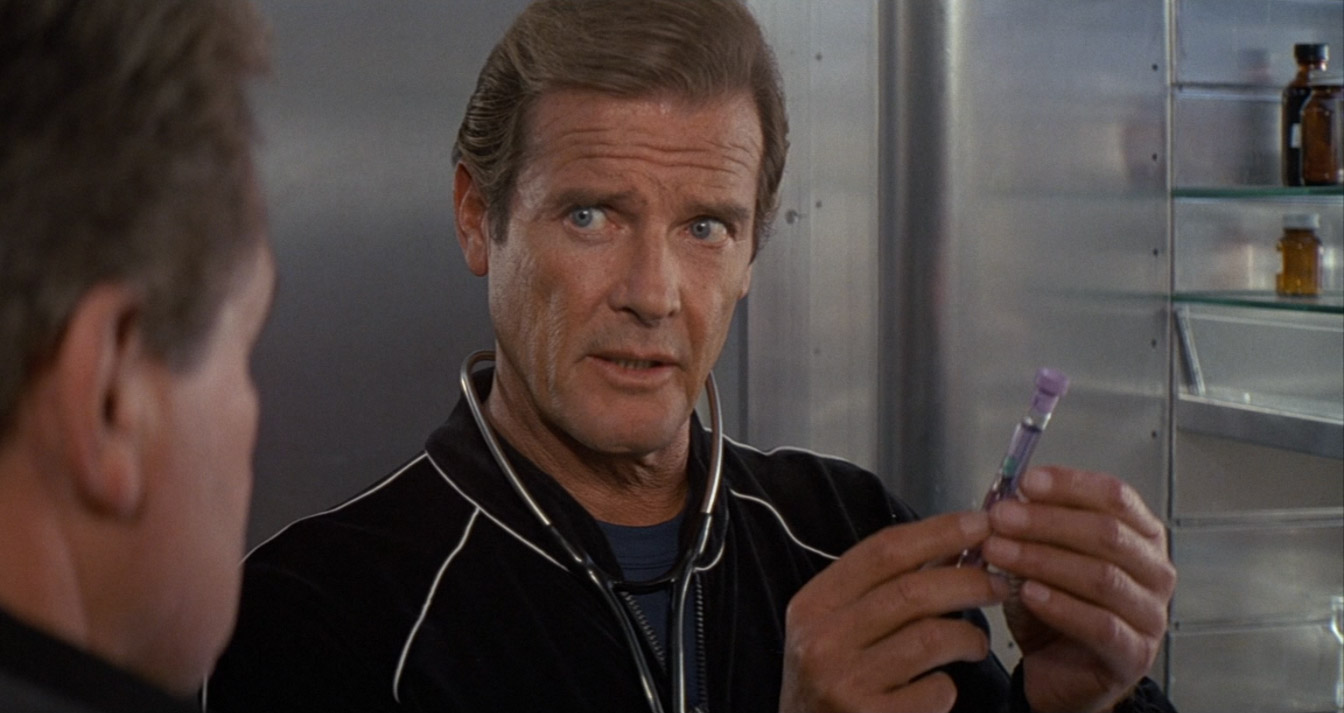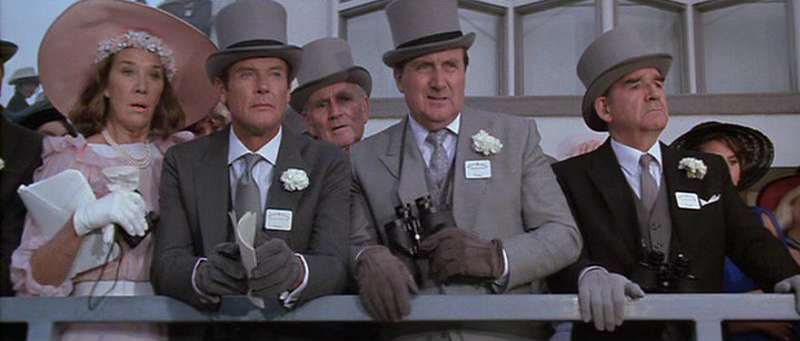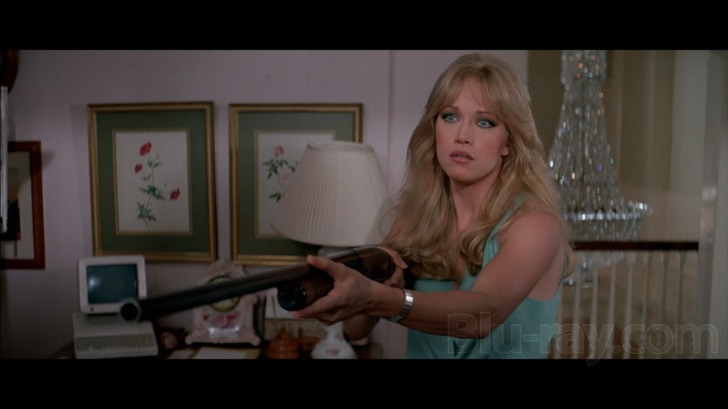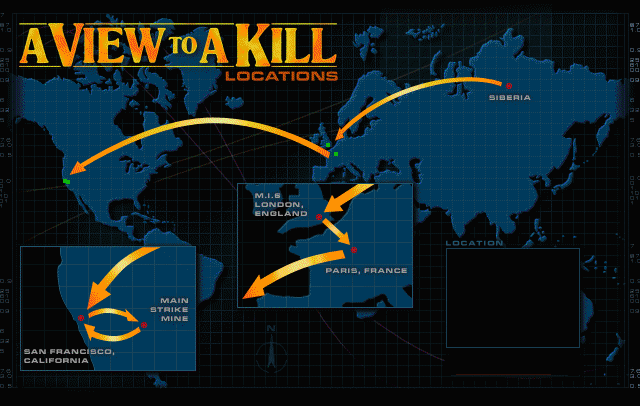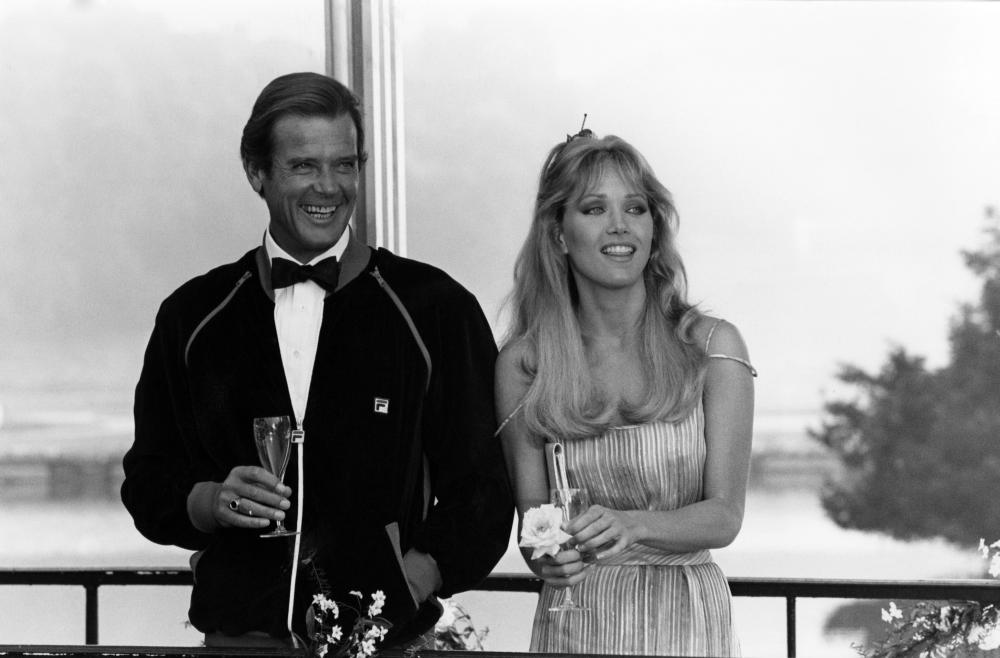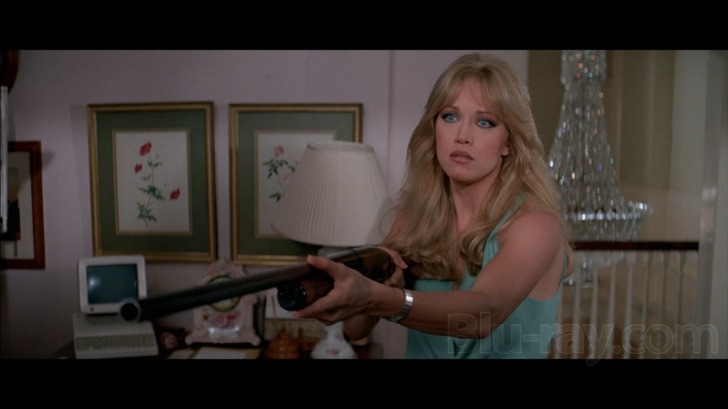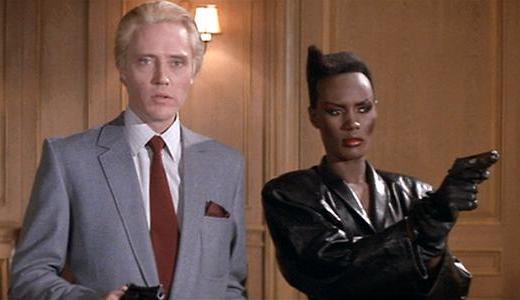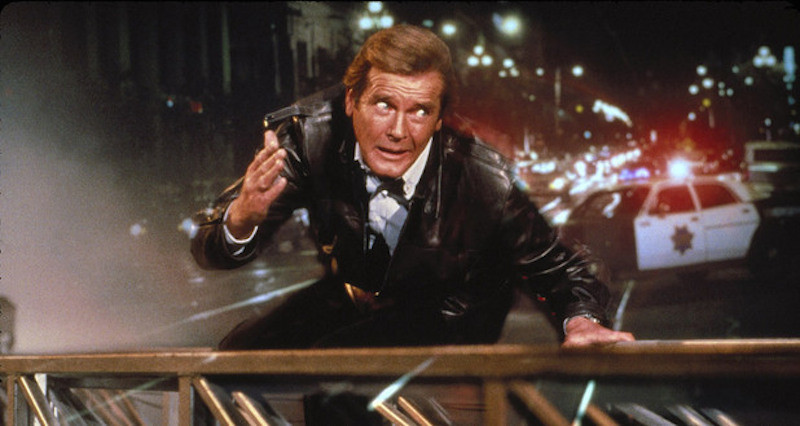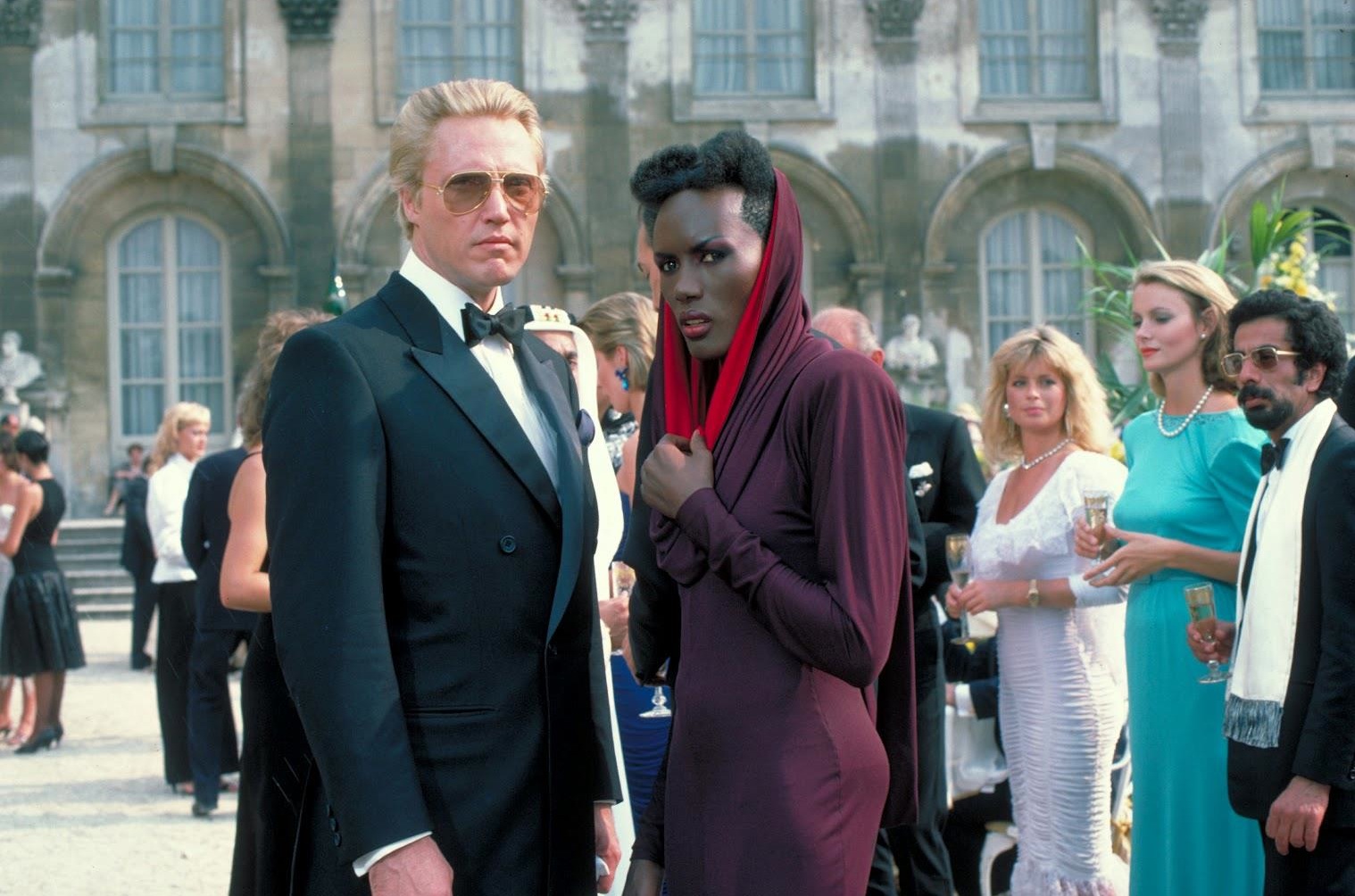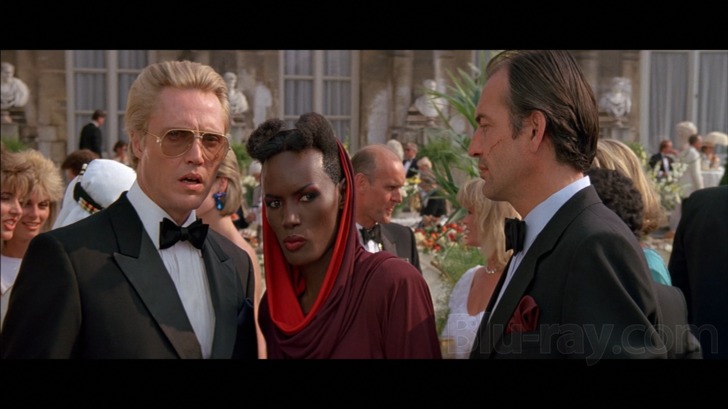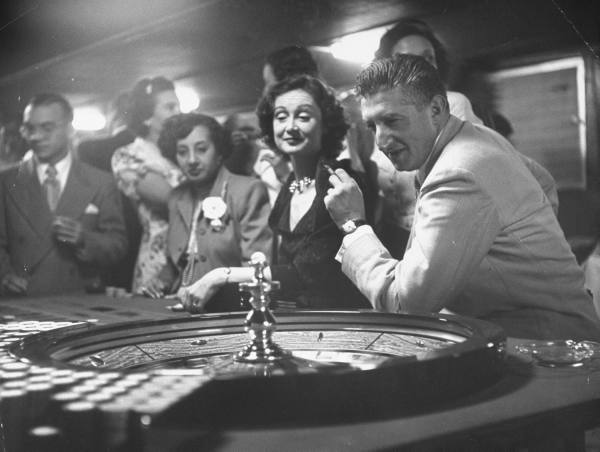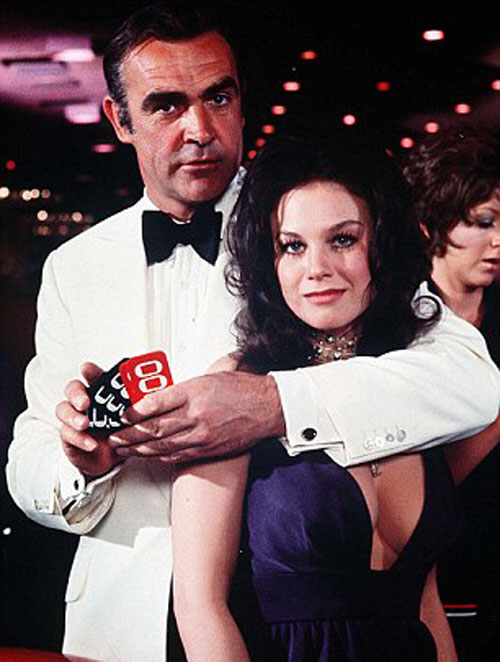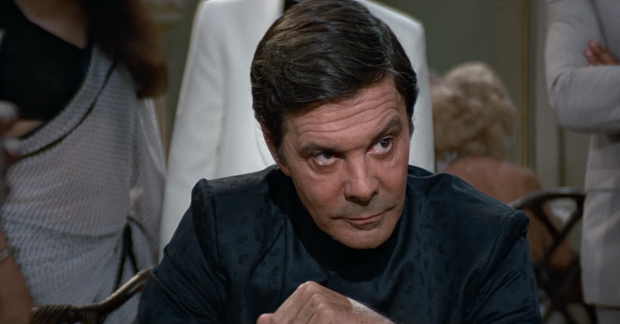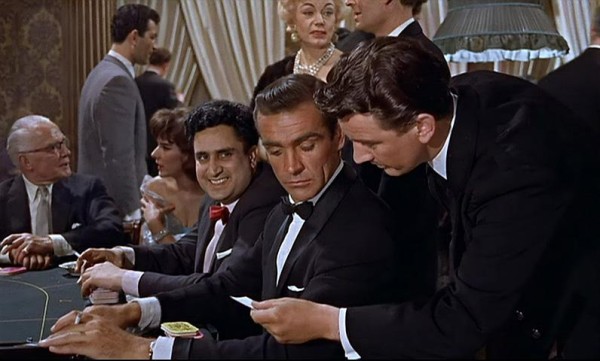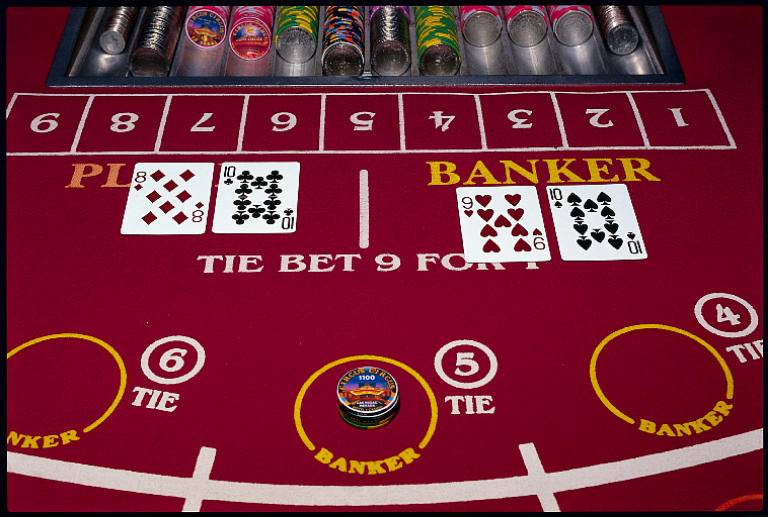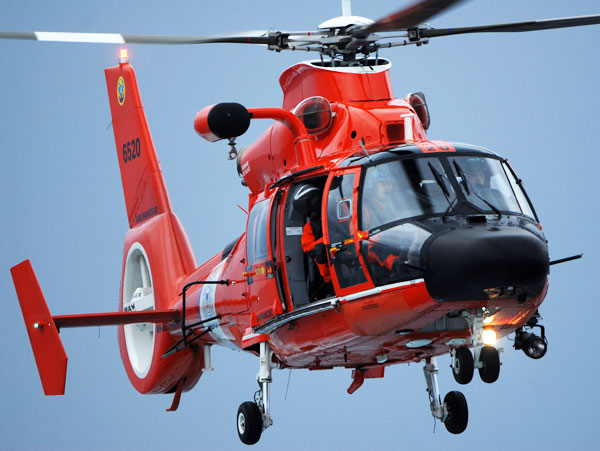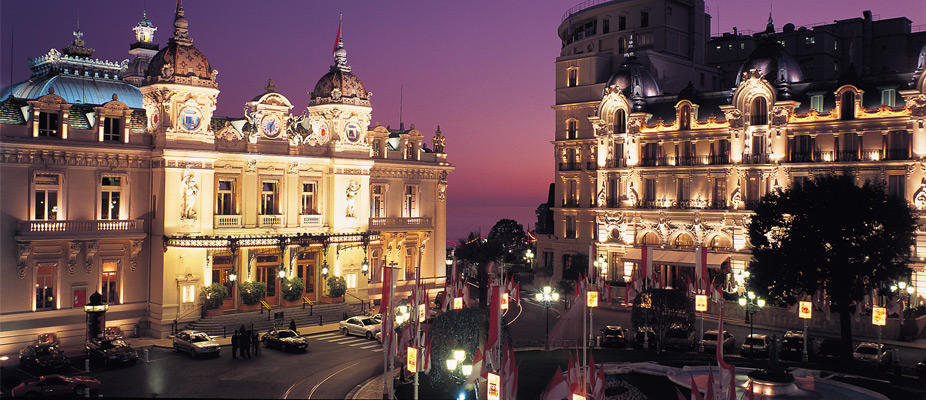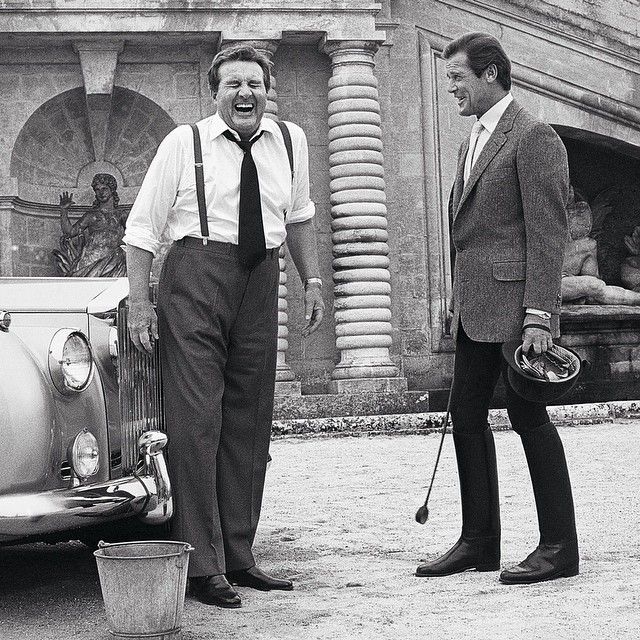 Set on the southern anchorage of the Golden Gate Bridge, San Francisco`s Vista Point is a perennial tourist spot, but Ned Kopp is not a tourist, and he was not enjoying the view. Kopp, whose company handled the San Francisco logistics for A View to a Kill, was alarmed; the equipment hadn`t arrived at the location. “Well, we`re on a tight schedule,” a considerably calmer Kopp explained later, “a little bit because of weather, and a little bit because of the number of people involved. We had all kinds of maps, schedules, plans – all colour coded, and the people we probably paid the least attention to were the US guys – particularly the locals, San Franciscans, because everybody knows where the Golden Gate Bridge is – I can`t imagine anyone who wouldn`t. “Now the Golden Gate has a south end and a north end, which probably most people know. By the dumbest accident, the equipment ended up on the wrong end. So here`s the whole crew – all the UK guys, everybody who should not know where to be – all in exactly the right place, and more than a small group was at the other parking lot on the north side.” Fortunately, the Golden Gate can be crossed in a matter of minutes, so after a brief scramble, the trucks were directed to the proper site.
Set on the southern anchorage of the Golden Gate Bridge, San Francisco`s Vista Point is a perennial tourist spot, but Ned Kopp is not a tourist, and he was not enjoying the view. Kopp, whose company handled the San Francisco logistics for A View to a Kill, was alarmed; the equipment hadn`t arrived at the location. “Well, we`re on a tight schedule,” a considerably calmer Kopp explained later, “a little bit because of weather, and a little bit because of the number of people involved. We had all kinds of maps, schedules, plans – all colour coded, and the people we probably paid the least attention to were the US guys – particularly the locals, San Franciscans, because everybody knows where the Golden Gate Bridge is – I can`t imagine anyone who wouldn`t. “Now the Golden Gate has a south end and a north end, which probably most people know. By the dumbest accident, the equipment ended up on the wrong end. So here`s the whole crew – all the UK guys, everybody who should not know where to be – all in exactly the right place, and more than a small group was at the other parking lot on the north side.” Fortunately, the Golden Gate can be crossed in a matter of minutes, so after a brief scramble, the trucks were directed to the proper site.
In that time, Kopp wasn`t the only one having anxiety attacks: “During that short period of time, the fog was coming in, and the UK people were getting very, very concerned that they were in the wrong place.” Learning fast, he made the incident and object lesson: “That happened to us on the first day, and after that, everybody got maps – even if they said they lived on the Golden Gate Bridge.” For Kopp and Nancy Giebink, who together form the core of Ned Kopp & Co., that was the beginning of a punishing, 21-day, $5 million dollar shooting schedule that saw them working around the clock for the entire shoot. The schedule – including five days of shooting 24 hours a day, with as many as four units filming at the same time – provided ample proof of Murphy`s Law. In addition to signing checks, Kopp and company`s responsibilities lie in the area generally referred to as “below the line” (i.e., variable with time). These assignments include below the line producing and packaging (i.e. the gathering of production personnel, including technicians, location scouts and managers, unit coordinators, etc), plus production management – all invisible to the viewer, but indispensable to the producer and director.
Although A View to a Kill was their first Bond picture, Kopp and Giebink brought formidable credits with them, having recently worked on Shoot the Moon, The Right Stuff, and just having wrapped Birdy, on which Kopp was the associate producer. Speculating on his involvement, he felt the two Alan Parker films (Shoot the Moon and Birdy) may have tipped the scales in his favour since both Parker and Eon Productions (the Bond Production Company) are based at Pinewood Studios outside London. In the fall of 1983, a full year before the San Francisco shooting, Kopp and Giebink held their first meetings with the Bond company. Heavily involved in preparing Birdy – then only two months from the start of production – their schedules didn`t permit a great deal of contact with the UK visitors, leaving much of the location scouting to associates Rory Enke, and Steph Benseman. After a week of scouting, and additional meetings, the Bond team left the Bay Area without having made a firm decision, in part because, at that time, a finished script didn`t even exist. While some general story ideas had been agreed upon, the final screenplay would be tailored to the specific locations selected; as a result, the location scouting took on far greater importance than in most other productions. Many months later, it would have a tremendous effect on Kopp`s work.
Birdy kept them busy well into August, when they moved over to A View to a Kill. Meanwhile, location scouting for the Bond movie continued at various sites around the world, the script remaining changeable. Six months later, a major accident had a huge impact on the San Franciscans` efforts. On June 27 a disastrous fire swept through the Bond sound stage at Pinewood, fed by exploding gas cylinders that had been used to fuel some campfires on a large forest set for Ridley Scott`s Legend, the blaze leveled the structure. Even though the Bond company had not actually planned to use the stage, the repercussions for A View to a Kill were enormous. Because the labor force at Pinewood is a permanent fixture that isn`t normally expanded with freelancers, the workers who otherwise would have been available to the Bond movie were withheld for the completion of Legend. Along with the shortage of labor, the designers now found themselves also confronted with a shortage of stage space of the planning and building of sets, putting a further crimp into the schedule of a picture that still did not have a locked down script.
Just over a month later, with Birdy wrapped, Kopp flew to London for a week of meetings on the Bond picture. Based on the scripts he had been sent and conversations with the principals involved, he had a general idea of the schedule that would be required. “Originally, they were going to shoot in the US and London at the same time,” he said. “They would shoot their first unit in London and they would have a second unit shooting plates, establishing shots, and things here. That second unit would then shoot dialog here with Roger Moore, Tanya Roberts and a few other people, then the principals would go back and the second unit would complete the chase. “So they`d send one foreign crew here, we would then hire another crew – or two, as necessary – and that group would then do everything. “At that time, we were planning on normal days. Normal being maybe 12-hour shoot days with an hour to get there, and an hour to get away – roughly 14 hours. That would be a week or so of first unit and a couple of weeks of second unit – chase stuff. It was about 15 days, and then probably a week or so of plates, backgrounds, pass-bys, and establishing shots – nothing with people, just all pretty pictures of the Bay Area. “That would all start around the end of September and go for three to five weeks. As it turned out, we went three weeks, because we went around the clock.”
Arriving in London in the first week of August, Kopp visited the production in progress. “They were already shooting first unit on the stage at Pinewood, so they`d been building sets for that for about a month or so. They were also shooting in Paris and they were either finishing up or still shooting in Iceland. “As I understand it, they`d started shooting in Iceland before they even had a finished script, but they had to do it, because that was the time of year when the glacier was going to do this, and the snow was going to do that… a lot of things were going to happen that they had to get going on.” Although some script changes were still being made by this time, the story was – more or less – settled, but unlike most projects, Kopp found more information in the storyboards, since they contained the action sequences that would not be changed.
Reading the script and looking at drawings, he realized that his work would play a major part in shaping the picture itself. “When I first read the script it said “a cable car chase,”” he remembered. “Well, the only time you could clear a cable car run – that is, shooting on the tracks – would be once the cable cars closed down. “You wouldn`t have a prayer of going to Muni (S.F. public transit) and saying, “Hi, we want to shoot on a Saturday afternoon, at the height of the tourist season, and we`ll just shut down your cable cars, and we`re going to control them for two or three days.” “But you do have a chance if you go to them and say, “We would like to do a cable car chase. It feels like it`s prestigious for San Francisco, and it`s going to show the cable cars in their best light. It`s going to show San Francisco in a very positive way, and we shoot it after you close down at night, from 12:30-1am to 4:30-5am, in the timespan of four or five hours, and instead of shooting it all in a day or two, we shoot it over three or four nights, do you see any problems with that?” Well, then the resistance is far less than even suggesting shooting it during the day.” Because of the logistics involved, Kopp made it clear that the stunt work – the bulk of the San Francisco shooting – would have to be filmed at night. This then had a “trickle down” effect that limited where the shooting could take place. “At one time – I wasn`t involved in it – Remy Julienne, the French stunt coordinator; Arthur Wooster, the second unit director; and Peter Lamont, the designer, came to San Francisco – on their own – and scouted, and they found places that they really loved for doing the chase. They found Broadway Hill, Divisadero, Filbert – all in Pacific Heights, where the Bullitt chase happened.” In addition to being one of the hilliest areas in San Francisco, Pacific Heights is one of the wealthiest and most established, with wide avenues and stately mansions. “When I went to Paris, and Remy showed me the photos of where they talked about a chase, I said, “well, you won`t have a prayer. We couldn`t possibly use that area. I think we could get you some pass-bys. I think you could get the fire engine coming down some of the hills and some police cars following it, but we`re not going to be able to block that off and tie up the area crashing cars.” “Then they asked when and what we could do, and I said, “we can control this at night, and do that at night…” which immediately ruled out Pacific Heights, because you can`t control it during the day, plus it`s residential, and you can`t be there after ten at night. If you got a waiver of any kind, then you could maybe be there to 10:30 or 11 o`clock – but then you`re dead. The police department stays pretty tight to that curfew – you can`t be in those neighbourhoods before seven in the morning. So as we saw what they said they wanted to do, we then tried to direct them toward the times of day and areas we felt we could clear.”
As scripted, the fire engine-led car chase began near city hall, further supporting the argument for night shooting. “You can never close Market Street (the main thoroughfare through downtown San Francisco),” Kopp explained. “City policy is you can never block streets. But if you go there at 1, 2, 3, 4, and 5 o`clock in the morning, the buses are no longer running like they were – there`s one every half-hour or 45 minutes; the taxi-cabs are not busy. There`s much less traffic. “Downtown San Francisco is not a residential area, so if you stay away from the hotels then you can pretty well smash and crash and bang cars all night long and never interfere with the police or the fire department or whatever,” Kopp says. By the middle of September, matters had become so impacted that 24-hour shooting was the only solution. Still feeling the consequences of the fire, the production was forced into shuttling between the stages in London and various international locations just to keep shooting. “They went from Paris to Chantilly,” Kopp explained. “They then went back to London for two weeks, and then they came to the us. While they were in London, they had to shoot those particular sets – and finish with them, so that they could take them down. Then, during the San Francisco shooting, they`d build more sets.”
What made the marathon approach acceptable was that it had little impact on the budget. “These were always separate units,” Kopp said. “Now whether the separate units were in a line, or whether they all happened to be at the same time, 24 hours, didn`t really affect the numbers an awful lot. The day crews shooting the plates were going to cost so much, and the fact that we had a day crew shooting dialog at the same time we had a day crew shooting plates, at the same time we had a night crew shooting chase… all of those were budgeted by themselves, so it really didn`t change the cost.” What it did change, though, was the entire preparation for the movie. “What we did that first week is in effect, three different movies. It would be like you were prepping for three separate, complete, totally different operations. Three different crews, three different packages of equipment, three different cameras – each unit had two or three cameras in their unit, so we had nine to twelve cameras with VistaVision and separate odd pieces of equipment.” But while the budget may not have been affected, the production office, which had been set up in whirlwind fashion in early August, was. (In fact, the Bond office went up in less than two days. Kopp returned from London on a Saturday, joined Giebink and their staff in closing Birdy`s San Jose office on Sunday, and Monday morning they were already answering the Bond phone calls in San Francisco.)
Shooting around the clock meant the production office had to follow suit, as Giebink explained: “To keep the office open 24 hours a day, there were three production coordinators, and one of them would come in at 6 am, and work say, 6-6; the next one would come in around noon – it varied, 10 to noon, and then work `til 10 PM or midnight; and then the night shift would come in around 6 PM and go `til 6 am so that provided office coverage with the most people there during the late day, which is when most of the activity was going on.” Having begun compiling the shooting schedule from the multi-colored screenplay and the storyboards, an even more complete picture began to emerge after they received an early schedule from Waye. This too presented new challenges, for not only was it in a format neither Kopp or Giebink had ever worked with before it also covered the whole movie. “We spent quite a bit of time going through their schedule just trying to pull out of it what pieces were going to be shot over here, because it was for the entire picture,” Giebink related. “So that was a little confused, but eventually we took all the information and started stripping it out, and the way we boarded it was to take the three basic units and keep them on separate schedules.”
Although the Bond movies are noted for their gadgetry, the making of the San Francisco schedule was accomplished in the same manner that has been the backbone of production scheduling for decades: carefully transferring the information – by hand – to thin, colored strips of cardboard and then arranging them on large production boards. But even with the London schedule and the script in hand, Giebink found the storyboards far more useful. “Although we all read the script diligently,” she said, “in the end, all the shooting was based on the `boards. The first unit stuff was based on the script, because very little of that was `boarded out. But the second unit, the aerial unit, and the Golden Gate Bridge unit were all based on the storyboards, and so instead of numbering to the script, like we`d normally do, we numbered everything to the `boards. “Most heads of departments had sets of storyboards, and in a lot of ways it`s really very easy, because you make copies of them and do one frame per page, and you cross them off as you do them, instead of marking the script and keeping track of it that way. It`s almost like shooting a commercial. “Now for the second unit – and the third, aerial and plates – the directors of both of those had very specific shot lists as well. So first the “boards, and that`s how we did all the breakdown and the scheduling, and then the shot lists, which were even more detailed than the storyboards.” No matter how careful the preparation, though, reality has a way of ruining even the very best planning, and given the first unit`s dramatically shortened availability, complications increased. Having a rough idea of the shooting schedule since spring, Kopp now began the laborious task of finalizing dates and locations. “So it`s now the first week or two in September,” he related, “and you go to City Hall, and you start trying to make your arrangements. They are as accommodating as possible, but as careful as possible. And they say, “Okay, you can use City Hall,” then they go and look at their calender, and you find out that the ninth, which is Tuesday, they have a reception in the rotunda for six or eight hundred people, and you`ve got it scheduled for Monday and Tuesday. “”You cannot use City Hall on Tuesday, the ninth.” “”But Mr Moore is only going to be in California for eight days…” “Not only that, the crew is only going to be here for a certain amount of time, and you`ve got that schedule pretty absolute on that Monday and Tuesday, and they say you can`t shoot there on Tuesday. So now you have to move things around. We ended up shooting there on Monday and Wednesday. “Now it also got involved because another location said that we could only shoot there on Sunday – that was the mine over in Marin. Another location said we could only shoot there on Saturday – that was the interior of City Hall. So that took care of those days. Then the only day we could shoot at Japantown was on a Friday, so we really didn`t have a lot of choices as to how we could flop things around on the schedule.”
Even while Kopp stood waiting for the equipment at the south end of the Golden Gate Bridge things were still changing. “The jetty in Richmond was supposed to be later,” Giebink remembered, “but a ship was due to come in, so we had to flop the whole schedule. I think we flopped it the night before we were going to shoot it. That was supposed to be on Wednesday, but we couldn`t have it Wednesday, so we brought it up to Monday, and then moved everything else. It just sort of dominoed back from there.” Shooting with a firm schedule – without room for contingencies – is the cinematic equivalent of working without a net, and it was the cause for more than a small amount of stress. “We could only be at certain places on certain days,” Kopp said. “Had we missed on some of those, had we had a camera malfunction, or an actor`s problem, or something, some of those locations we could not go back to until maybe a week later – which Roger Moore and the first unit couldn`t do. For instance, if we hadn`t finished at the mine on that Sunday, we couldn`t have been back on Monday, Tuesday, or Wednesday; we`d have had to wait another whole week. “Now that would mean we`d have had to keep all those people here with nothing for them to do for a week, so we had to hire enough crew to make sure we finished. This caused tremendous pressure on John Glen, the director.”
A reflection of how frantic the pace became after shooting began was reflected in the UK crew`s timetable. Arriving from London on a Saturday, their second unit was shooting on Sunday. After a day`s rest, the first unit also began shooting, and Kopp and Giebink now found themselves not only dividing their time between the production office and the locations, but among the crews as well. In general, Kopp stayed with the first unit, while Giebink remained with the third unit (aerials), which was shooting at the same time. With the start of night stuntwork on the third day, the schedule became a full, twenty-four hour circus. After monitoring all the daylight filming, Kopp and Giebink would then make their way out to the second unit, shooting the chase that night. Giebink described their work schedule: “There would sometimes be a period of time from 2 to 4 in the morning when neither Ned nor I were in the office, because maybe one of us was taking a nap, and the other was on the set. Ideally, both of us would be around, because different problems come up, and one set of problems needs him and another set of problems needs me. So there was a period when we were only getting two or three hours of sleep in twenty-four.” Keeping to the frantic schedule, the first unit and cast left San Francisco on a Tuesday afternoon and began shooting on the Pinewood stages the following Monday. Meanwhile, the second unit, which was shooting all the chase footage, was still in the US, facing 12 more nights of San Francisco filming. Still to be shot were the remainder of the City Hall fire, Bond (now a stunt double) hanging from a fire engine ladder and swinging through traffic, the engine being chased among the cable cars, and Bond`s escape by jumping the engine across a drawbridge. “We couldn`t go onto California Street with the cable cars until 1 am,” Giebink explained. “So on those nights, we had to shoot other things, and then do the move. We tried hard to get onto California lots earlier than 1 am but in the end, the schedules couldn`t be changed.
“We had a scheme,” she laughed, “where we were going to hire motorized cable cars and have them run Sacramento Street for the general public, and we could have California street, but the authorities didn`t think that was such a good idea. “That was probably the biggest scheduling restriction: how to get to and from California Street, because you didn`t want to be on the far side of two the night you had to make that move. So we shot around China Basin (about a mile and a half away), and then moved to the cable cars. We did that four nights. It`s a tough move, because you lose – you really lose – a couple of hours.” In other situations, those few hours might not have mattered, but once again; the production was racing the clock. “We could only shoot the cable cars from one in the morning to five in the morning – four hours,” Kopp said. “So that meant we had to find something to shoot at the beginning of the night, for four hours, make our move, somewhere in between there eat, shoot for four hours, and then get off the street before morning traffic started. So we shot other places in town the first part of the night. For instance, we shot up on Potero Hill a little bit – just some pass-bys, and some vistas of the bridge in the background and the fire truck going by, but those are residentials, and you can only be in those areas until ten o`clock at night. So we`d shoot those the first part of the night, then we`d shoot the cable cars. “The choice ended up being: did I want one crew to work an awful lot of overtime, or did I want a couple of crews to work pretty much straight time, and we ended up somewhere in the middle of that split. I had a crew coming in early and going home early, and a crew coming in later and going home late. We had to do that for four nights. The crew saved us; they were fantastic. “Now, not only does that involve personnel, but we had to find additional equipment: lighting, cranes, and cherry pickers. All the same cameras worked and some of the same lights; the same generators worked, because you just unplug them, drag them to the next place and plug them in again. But the lights are way up there on cranes and on roofs. People let us leave lights out on balconies, on fire escapes, and on rooftops, without much concern.”
While all the shooting was being done at night, Kopp and Giebink`s work hours were not significantly reduced. “Even when it was just down to the second unit, shooting nights, we wound up doing the same thing in hours, because a lot of the problems will happen at night, but all their solutions happen in the daytime, during business hours.” Giebink said. “It`s tough to do all your business at 2 o`clock in the morning, so you`ve got to be up during the daytime. “But I don`t think physically you could do that schedule for more than the time we did it. Three or four weeks… it`s pretty tough on you physically.” Kopp agreed, and said that the keys to surviving the ordeal were keeping the wrap date in sight, and having the right people. “I think it`s fairly easy if you can see the end, if it`s going to stop in a week,” he said. “I think it`d be tougher if you think you might have to do that for three or four months, then I`m sure there would be a stress point, or give-up point, or a point where you couldn`t muddle through a plan. “When you have a group of people, you have to be able to yell at those people and have them yell back. And if they – or you – get too nervous because someone`s yelling, you`ve got the wrong group of people. Your success or failure is with each other.” After shooting 21 days and spending $5 million dollars, the production wrapped. While openly admitting that luck played a factor in his company`s success, Kopp was justifiably proud of the job his group had done, and he summed everything up in seven magic words: “We finished on time, and on budget.” Russell Ito is a free lance writer based in San Mateo, California. His other skills include production stills photography.
24Hours On A View To A Kill was reproduced with the expressed written permission of American Cinematographer Magazine. Any further reproduction, transmission or duplication without the consent of American Cinematographer is strictly prohibited. For more information on American Cinematographer, visit their website at: www.cinematographer.com.
 The “Making of” Tomorrow Never Dies books currently chronicling the making of films are notoriously bad. Packed with overlarge pictures, and consisting largely of an extended synopsis of the movie at hand, they usually aren`t worth the paper that they are printed on. Thankfully, Garth Pearce`s The Making of Tomorrow Never Dies is different.
The “Making of” Tomorrow Never Dies books currently chronicling the making of films are notoriously bad. Packed with overlarge pictures, and consisting largely of an extended synopsis of the movie at hand, they usually aren`t worth the paper that they are printed on. Thankfully, Garth Pearce`s The Making of Tomorrow Never Dies is different.
